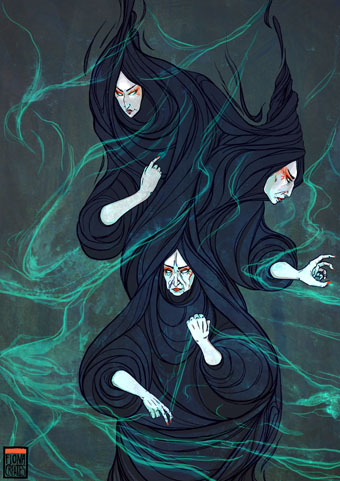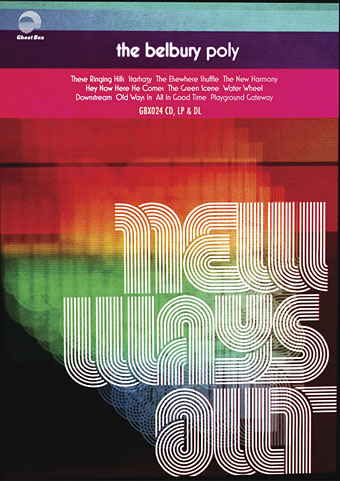Threads of Fate—The Weird Sisters from Macbeth (2013) by Fiona Marchbank.
• The week in books: Claire Cameron on the difference between US & UK cover designs | Jason Diamond asks “Why do cats love bookstores?” | Alan Moore’s cover art for his forthcoming novel, Jerusalem, has been revealed | Brian Phillips on the typefaces used by New English Library for their Dune covers in the 1970s.
• On writing: Poetry and horror “share a universally human quest toward intimacy” says Evan J. Peterson | “The best work neither shows nor tells: it says by being, not by saying,” says M. John Harrison.
• At the BFI this week: Where to begin with Jerzy Skolimowski, and 10 overlooked British horror films of the 1970s. Both lists include Skolimowski’s excellent The Shout (1978).
Cultures do not, and cannot, work through notions of ‘ownership’. The history of culture is the history of cultural appropriation—of cultures borrowing, stealing, changing, transforming.
Nor does preventing whites from wearing locks or practicing yoga challenge racism in any meaningful way. What the campaigns against cultural appropriation reveal is the disintegration of the meaning of ‘anti-racism’. Once it meant to struggle for equal treatment for all. Now it means defining the correct etiquette for a plural society. The campaign against cultural appropriation is about policing manners rather than transforming society.
Kenan Malik on ill-considered complaints against “cultural appropriation”. Malik isn’t the first to note the intersection of such complaints with those of white supremacists who also want cultural purity and segregation
• OUT, DEMONS, OUT!: The 1967 Exorcism of the Pentagon and the Birth of Yippie! An oral history by Larry “Ratso” Sloman, Michael Simmons and Jay Babcock.
• The long-overdue republication of Moebius’s work in English will begin with a new edition of The World of Edena (1985).
• More from radioactive Russia: Nadav Kander’s photographs of Soviet nuclear test sites.
• Comic artist and illustrator Kris Guidio in conversation with Jonathan Barlow.
• Francesca Gavin meets Tadanori Yokoo, “the Grandmaster of Pop-Psych Art”.
• “LSD’s impact on the brain revealed in groundbreaking images”
• Mix of the week: Secret Thirteen Mix 182 by Paul Jebanasam.
• A trailer for Nicolas Winding Refn’s The Neon Demon.
• Tony Conrad: 1940–2016 by Geeta Dayal.
• Brian Eno’s favourite records
• Neonlicht (1994) by Mitja VS (with Enzo Fabiani Quartet) | On Demon Wings (2000) by Bohren & Der Club of Gore | Shout At The Devil (2002) by Jah Wobble & Temple Of Sound





